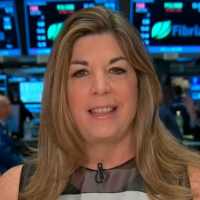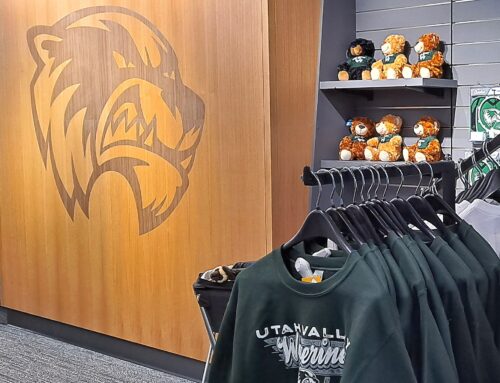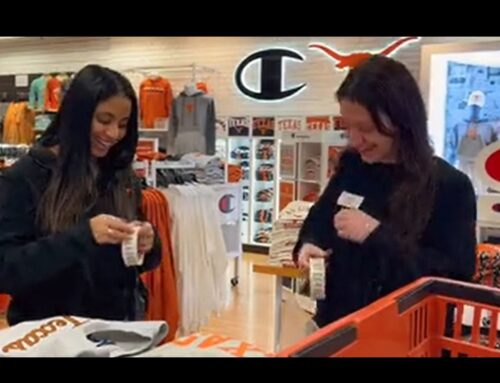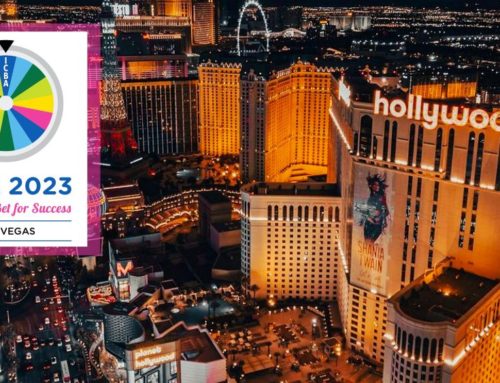
Jon Bibo attended the Global Retailing Conference (GRC) in Tucson, AZ, for the 5th consecutive year and shares his thoughts on this exciting conference that addresses hot topics and the latest strategies in the world of retail.
The GRC is one of my favorite and most thought-provoking Conferences each year. The GRC coordinates with the Terry Lundgren Center for Retailing at the University of Arizona—which is on the cutting edge of practical, real-world retail training.
This year, 17 top executives shared their strategies, insights, and philosophies for success. Each GRC session lasts just 45 minutes (including a Q&A period), so attendees receive just the right amount of information to stimulate new ideas. The Conference lasts just 1.5 days, so plenty of high-quality content is packed into a very short amount of time. I can’t imagine another event where so much expertise is shared in such a short amount of time that is so incredibly relevant for retailers of all types (especially college stores).
Check out this year’s impressive lineup of speakers:
- Terry Lundgren (retired CEO & Chairman) from Macy’s
- Doug McMillan (President & CEO) from Walmart
- Kathy Ireland (CEO & Chief Designer) from Kathy Ireland Worldwide
- Matthew Shay (President & CEO) from the National Retail Federation
- Marvin Ellison (President & CEO) from Lowe’s
- Anne Spangenberg (VP of Global Merchandising) from Nike
- Billie Whitehouse (CEO & Founder) from Wearable X
- Sarah Quinlan (Executive Director) from QAM Limited (and ICBA Conference Keynote Speaker in 2016 and 2017!)
- J.C. Curleigh (President & CEO) from Gibson Brands
- Harris Diamond (Chairman & CEO) from McCann Worldgroup
- Suzanne Powers (Global Chief Strategy Officer) from McCann Worldgroup
- K. Symancyk (President & CEO) from PetSmart
- Robert Eckert (retired CEO) from Mattel
- Jill Standish (Senior Managing Director) from Accenture
- Lindsay Lurie (CMO for Security & Cognitive Application) from IBM
- Lauren Adams (Principal Strategy Director) from Gensler
- Amelia Falco (Senior Associate Designer) from Gensler

Marvin Ellison
President & CEO
Lowe's

Sarah Quinlan
Executive Director
QAM Limited
5 Common Themes from the Global Retailing Conference that can Benefit College Stores
1. Successful retailers combine both in-store & online strategies to serve customers
-
- The latest data shows that 85%-89% of all retail sales still come through physical stores (although online sales are growing faster).
- Matt Shay from the NRF shared that retail experienced strong 4.6% growth in 2018 and is expected to grow 3.8%-4.4% in 2019.
- Online sales grew at approximately 15% in 2018 with similar growth expected in 2019.
- Multiple speakers felt that online retail sales are unlikely to exceed 20% in the next 5 years.
- NOTE: certain categories, such as fashion apparel and accessories and electronics, are currently as high as 45%-55% online.
- Think Mobile First! This has been a consistent theme at the GRC for the last few years. Too many retailers focus on their web sites rather than optimizing the mobile experience for consumers. By building “backwards” from the consumer, who is likely using a mobile device, retailers will be more successful. If consumers do not have a great experience using their mobile devices to interact with you, then it doesn’t matter how great your web site looks.
- Matt Shay from the NRF shared that retail experienced strong 4.6% growth in 2018 and is expected to grow 3.8%-4.4% in 2019.
- The latest data shows that 85%-89% of all retail sales still come through physical stores (although online sales are growing faster).
2. Any claims of a Retail Apocalypse are wildly exaggerated
-
- Part of the reason so many U.S. retail stores are closing is because there is simply too much retail square footage in the U.S., and a “right-sizing” is sorely needed.
- The U.S. has 23.5 retail square feet per capita, which is 5x more than the U.K., 6x more than what’s in China, and almost 10x what exists in Germany.
- Plenty of online retailers are developing a physical store presence including: Amazon, Wayfair, Everlane, Bonobos, Warby Parker, and Caspar, because they realize that physical stores offer branding and selling opportunities that are not achievable online.
- There’s too much inventory in physical stores, but out-of-stocks on top sellers continue to be a problem. Marvin Ellison from Lowe’s said, “Don’t put the icing on before the cake is finished!” In other words, basic assortment planning, inventory management, sales floor presentation, and knowledgeable/friendly customer service are all areas to monitor before engaging in dramatically new strategies.
- Part of the reason so many U.S. retail stores are closing is because there is simply too much retail square footage in the U.S., and a “right-sizing” is sorely needed.
Retail Square Footage Per Capita
3. If you are not failing (often), you are not trying hard enough
-
- Every single speaker cited strategic or tactical mistakes they’ve made (over time and recently) and how they continue to learn from them. For them, trial and error is not an event or a one-time effort, it’s a culture that is essential for success. They also challenged all senior leaders in the audience to make sure their teams know that smart risk-taking is required and that a certain percentage of failure is to be expected and should not be feared.
- Finding new ways of thinking about traditional products, services, or messages can be a real difference-maker.
- J.C. Curleigh (now with Gibson, but formerly with M&M/Mars) explained that when M&M/Mars sponsored the 1992 Olympics, they invested $30M in advertising and sponsorship. The key to their success came when they convinced the Olympic Committee to change how they advertised and referred to Snickers. The original plan was to call it the “Official Candy Bar of the 1992 Olympics.” J.C. insisted that it be referred to as the “Official Snack Food of the 1992 Olympics.” This subtle but important change in positioning led to significant growth for Snickers and changed consumers’ perceptions of a Snickers “candy bar,” which had been around for decades.
- Marvin Ellison from Lowe’s had a funny line: “Sometimes, the best way to overcome the challenges of change management, is to change management!” – Think about it! Management must set the standard and instill a culture of continuous improvement and innovation.
- While virtual reality, augmented reality, and use of voice technology were mentioned, almost all speakers stressed that those technologies have room for improvement. More importantly, those tools will never replace solid selling skills and being an excellent overall merchant.
- While addressing how Walmart is using advanced retail technologies, CEO Doug McMillan stressed that people lead, technology simply empowers.
- Personalization and Customization continue to be areas of growth for retailers and are very appealing to consumers.
- Microsoft launched a very successful campaign whereby consumers could design their own color combinations for X Box Gaming Controllers and receive financial compensation if their designs became popular.
- Are there products or activities you can develop for your campus that can’t be found anywhere else??
4. Embracing/fostering team Diversity & Inclusion is more than a good idea, it’s a winning business strategy
-
- Doug McMillan of Walmart stressed that their efforts to improve in the area of diversity and inclusion have been very positive, but he also noted that they have much room for improvement.
- Clearly, younger consumers expect and demand that the companies they patronize are socially responsible and demonstrate inclusiveness in their culture and business practices. They want to be part of something “bigger” than themselves and expect the same of those with whom they interact.
5. Shopping & buying are two different activities
-
- While multiple speakers highlighted providing consumers with memorable “experiences” as well as good products and prices, there was quite a bit of discussion around differenting aspirational/exploratory shopping from functional/efficient product buying.
- Speaking of defining what makes up that retail “experience” we all have been hearing about for a few years, the team from Gensler (architecture, design, and planning firm) identified the following 5 components of retail experiences:
- Social
- Discovery
- Task
- Entertainment
- Aspiration
- Gensler stressed that not every retailer can or should try to incorporate all of those components in their strategy in all categories.
- Suzanne Powers of McCann articulated the fact that for basic commodity items, efficiency of the buying process should be the focus for retailers. While in other impulse or discretionary purchase categories, the fun and social exploration/discovery/aspirational aspects of retail should be emphasized.
I strongly encourage college stores to consider attending the GRC in the future. Debby Shively at the University of Arizona BookStores is always a gracious host and Conference attendee. I guarantee that you will leave with a notebook (or mobile device) full of great ideas, notes, reminders, innovative concepts, and inspiration.





thanks Jon! I really missed going this year due to budget constraints. and… Debby is a VERY gracious host.